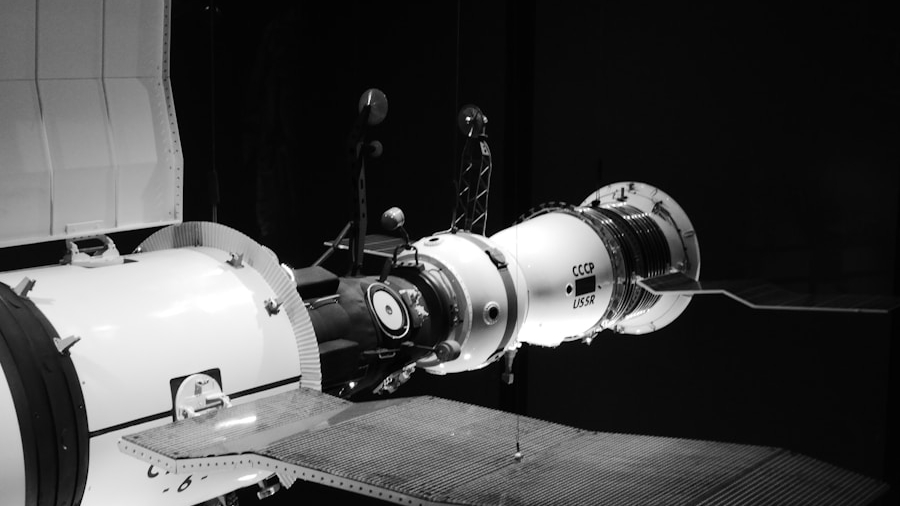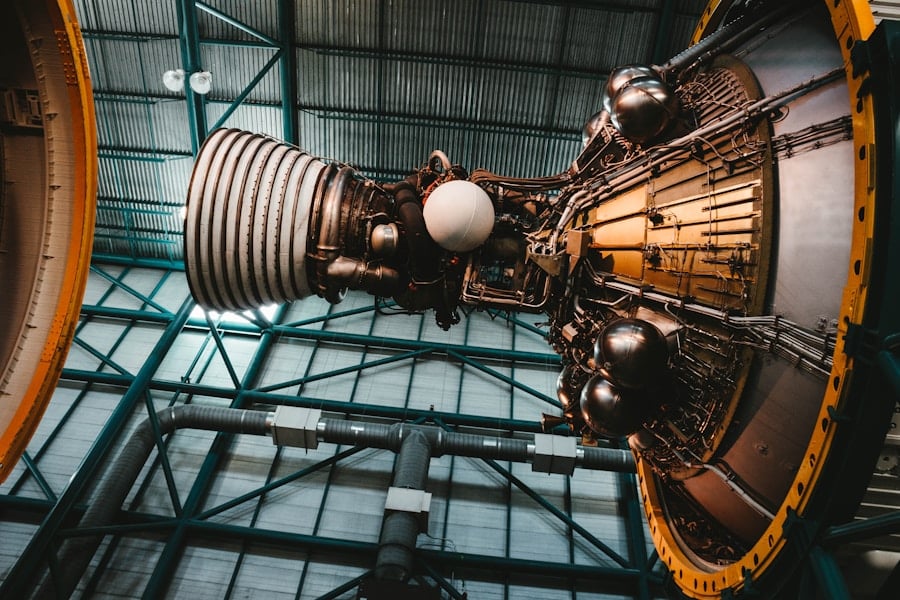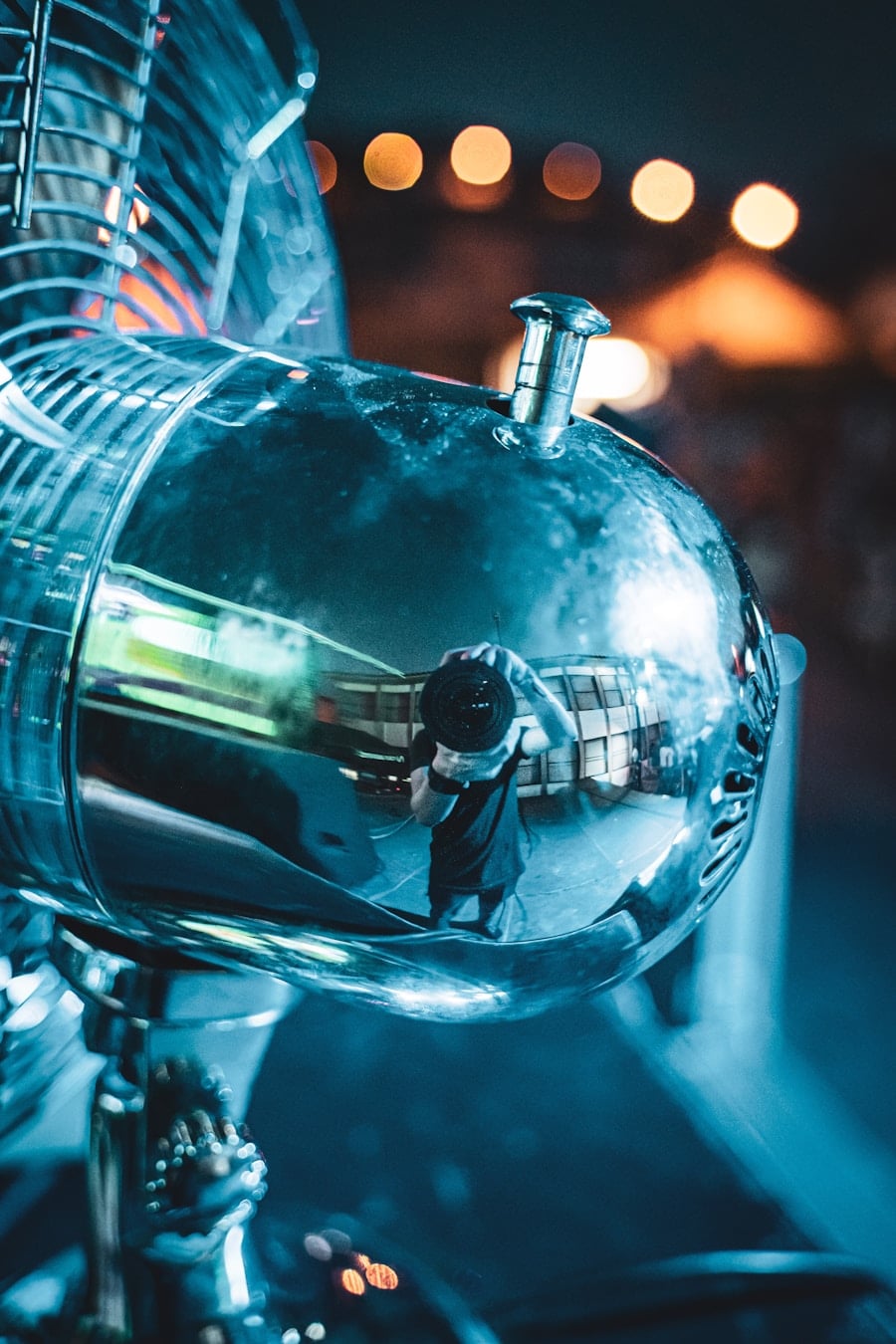The intersection of artificial intelligence (AI) and space propulsion represents a frontier of innovation that could redefine humanity’s capabilities in exploring the cosmos. As space agencies and private enterprises alike push the boundaries of what is possible, the integration of AI into propulsion systems emerges as a pivotal development. AI technologies can enhance the efficiency, reliability, and adaptability of propulsion systems, which are critical for missions ranging from satellite deployment to interplanetary exploration.
The complexity of space travel necessitates advanced solutions, and AI offers a pathway to optimize performance and reduce risks associated with propulsion failures. The application of AI in space propulsion is not merely a theoretical concept; it is already being explored and implemented in various forms. From machine learning algorithms that predict system failures to autonomous navigation systems that adjust thrust in real-time, AI is poised to revolutionize how spacecraft are powered and maneuvered.
As we delve deeper into the challenges currently faced in space propulsion, it becomes evident that AI could be the key to overcoming these obstacles and unlocking new possibilities for future missions.
Key Takeaways
- AI is revolutionizing space propulsion by improving efficiency and performance.
- Current challenges in space propulsion include limited fuel efficiency and high costs.
- AI can improve space propulsion systems by optimizing fuel consumption and enabling autonomous decision-making.
- Examples of AI-enhanced space propulsion technologies include AI-powered thrusters and autonomous navigation systems.
- The future of AI in space propulsion holds promise for next-generation systems with increased reliability and sustainability.
Current Challenges in Space Propulsion
Space propulsion systems face a myriad of challenges that hinder their efficiency and effectiveness. One of the most pressing issues is the weight-to-thrust ratio of traditional propulsion systems. Conventional chemical rockets, while powerful, are often limited by the amount of fuel they can carry, which directly impacts their payload capacity and range.
This limitation becomes particularly significant for deep-space missions, where every kilogram counts. The need for more efficient propulsion methods that can provide greater thrust without excessive weight is paramount for advancing human exploration beyond low Earth orbit. Another challenge lies in the reliability of propulsion systems during critical phases of flight.
Spacecraft must endure extreme conditions, including intense vibrations during launch and the vacuum of space. Failures in propulsion can lead to catastrophic mission outcomes, making redundancy and fault tolerance essential design considerations. Moreover, the complexity of modern spacecraft means that propulsion systems must integrate seamlessly with other subsystems, such as navigation and communication.
This interdependence increases the risk of failure if not managed properly, highlighting the need for advanced monitoring and control systems that can adapt to changing conditions.
How AI Can Improve Space Propulsion Systems
AI has the potential to address many of the challenges faced by current space propulsion systems through enhanced data analysis, predictive maintenance, and autonomous decision-making capabilities. By leveraging machine learning algorithms, engineers can analyze vast amounts of data generated by propulsion systems to identify patterns and predict potential failures before they occur. This proactive approach to maintenance can significantly reduce downtime and increase mission success rates.
For instance, AI can monitor engine performance metrics in real-time, allowing for adjustments to be made on-the-fly to optimize thrust and fuel consumption. Furthermore, AI can facilitate the development of more advanced propulsion technologies, such as electric or hybrid systems that offer higher efficiency compared to traditional chemical rockets. These systems often require complex control algorithms to manage power distribution and thrust levels effectively.
AI can enhance these control systems by enabling them to learn from past performance and adapt to new conditions, ensuring optimal operation throughout a mission’s duration.
Examples of AI-Enhanced Space Propulsion Technologies
Several pioneering projects illustrate the integration of AI into space propulsion technologies. One notable example is NASA’s use of AI in the development of the Space Launch System (SLS), which is designed for deep-space exploration missions. The SLS incorporates advanced algorithms for trajectory optimization and fuel management, allowing for more efficient launches and better payload delivery to destinations such as Mars or beyond.
By utilizing AI-driven simulations during the design phase, engineers can predict how different configurations will perform under various conditions, leading to more robust designs. Another compelling case is the European Space Agency’s (ESA) work on electric propulsion systems, particularly ion thrusters. These systems are inherently more efficient than traditional chemical rockets but require sophisticated control mechanisms to manage thrust levels effectively.
ESA has been experimenting with AI algorithms that can autonomously adjust thrust based on real-time data from onboard sensors. This capability not only enhances performance but also extends the operational lifespan of the thrusters by preventing overheating and other potential issues.
The Future of AI in Space Propulsion
Looking ahead, the future of AI in space propulsion appears promising as technological advancements continue to unfold. The ongoing development of quantum computing could further enhance AI’s capabilities in processing complex simulations and optimizing propulsion systems at unprecedented speeds. This leap in computational power may enable engineers to design propulsion systems that are not only more efficient but also capable of operating under a wider range of conditions than ever before.
Moreover, as private companies like SpaceX and Blue Origin continue to innovate in the space sector, competition will likely drive further advancements in AI-enhanced propulsion technologies. These companies are already exploring reusable rocket technologies that rely on precise control algorithms to land boosters safely back on Earth. The integration of AI into these systems will be crucial for achieving reliable reusability, which could significantly lower the cost of access to space and open up new opportunities for exploration and commercial ventures.
Ethical and Safety Considerations in AI-Enhanced Space Propulsion
Autonomous Decision-Making and Ethical Guidelines
One primary concern is the potential for autonomous systems to make critical decisions without human intervention. In scenarios where a spacecraft encounters an unexpected situation, such as a sudden change in trajectory or system failure, AI must be programmed with robust ethical guidelines to ensure that decisions align with mission objectives and safety protocols.
The Risk of Over-Reliance on AI Systems
Additionally, there is a risk associated with over-reliance on AI systems. If engineers become too dependent on automated decision-making processes, they may overlook fundamental principles of spacecraft design and operation. It is essential to maintain a balance between human oversight and machine autonomy to ensure that safety remains paramount throughout all phases of a mission.
Training and Simulation Exercises for Human Operators
Continuous training and simulation exercises will be necessary to prepare human operators for scenarios where they must intervene or override AI decisions. This will ensure that human operators are equipped to handle unexpected situations and make informed decisions that prioritize safety and mission success.
Collaborations and Partnerships in AI and Space Propulsion
The advancement of AI in space propulsion is not solely reliant on individual organizations; it thrives on collaboration across various sectors, including academia, government agencies, and private industry. Partnerships between universities and space agencies have proven fruitful in developing innovative solutions that leverage cutting-edge research in AI and machine learning. For instance, collaborations between NASA and academic institutions have led to breakthroughs in predictive maintenance algorithms that enhance the reliability of propulsion systems.
Private companies are also playing a crucial role in this ecosystem by bringing agility and fresh perspectives to traditional aerospace challenges. Startups focused on AI-driven technologies are increasingly partnering with established aerospace firms to integrate their innovations into existing propulsion systems. These collaborations foster an environment where new ideas can flourish, ultimately accelerating the pace at which AI-enhanced propulsion technologies are developed and deployed.
The Potential Impact of AI on Next-Generation Space Propulsion Systems
The integration of artificial intelligence into space propulsion systems holds transformative potential for future exploration endeavors. By addressing current challenges such as efficiency, reliability, and adaptability, AI can pave the way for more ambitious missions beyond our planet.
The collaborative efforts between academia, industry, and government will be instrumental in shaping the future landscape of space propulsion technologies. As these partnerships evolve, they will likely yield innovative solutions that not only enhance our capabilities in space but also inspire a new generation of explorers eager to push the boundaries of what is possible in our quest to understand the universe.
In a related article from TechRepublic, IT decision-makers can identify technologies that are shaping the future of space exploration, including advancements in AI for developing next-generation space propulsion systems. The article discusses how AI is revolutionizing the way we design and build spacecraft, making them more efficient and capable of exploring further into the cosmos. To learn more about the latest technologies driving innovation in space exploration, visit TechRepublic.
FAQs
What is AI?
AI, or artificial intelligence, refers to the simulation of human intelligence in machines that are programmed to think and act like humans. This includes tasks such as learning, problem-solving, and decision-making.
What are space propulsion systems?
Space propulsion systems are technologies used to propel spacecraft through outer space. These systems are essential for maneuvering and maintaining the trajectory of spacecraft.
How is AI being used in developing next-generation space propulsion systems?
AI is being used in developing next-generation space propulsion systems by optimizing the design and performance of propulsion systems, enabling autonomous control and decision-making, and improving the efficiency and reliability of space missions.
What are the benefits of using AI in space propulsion systems?
The use of AI in space propulsion systems can lead to more efficient and cost-effective space missions, improved safety and reliability, and the ability to explore deeper into space with advanced propulsion technologies.
What are some examples of AI applications in space propulsion systems?
Examples of AI applications in space propulsion systems include using machine learning algorithms to optimize propulsion system designs, implementing autonomous navigation and control systems, and developing predictive maintenance capabilities for spacecraft propulsion systems.



